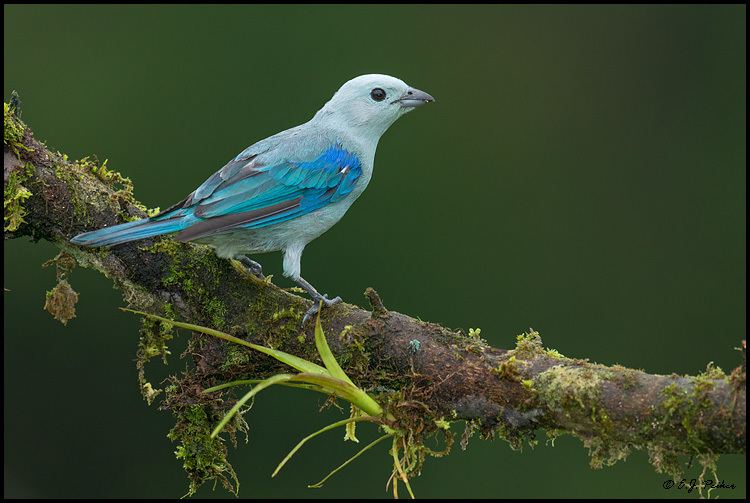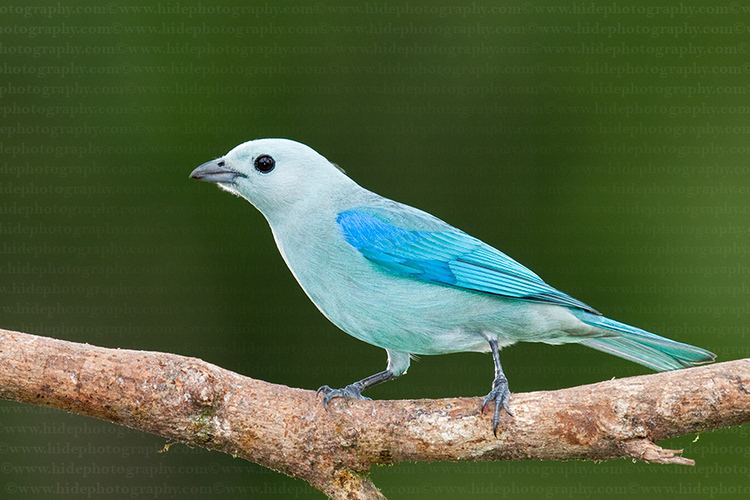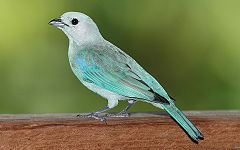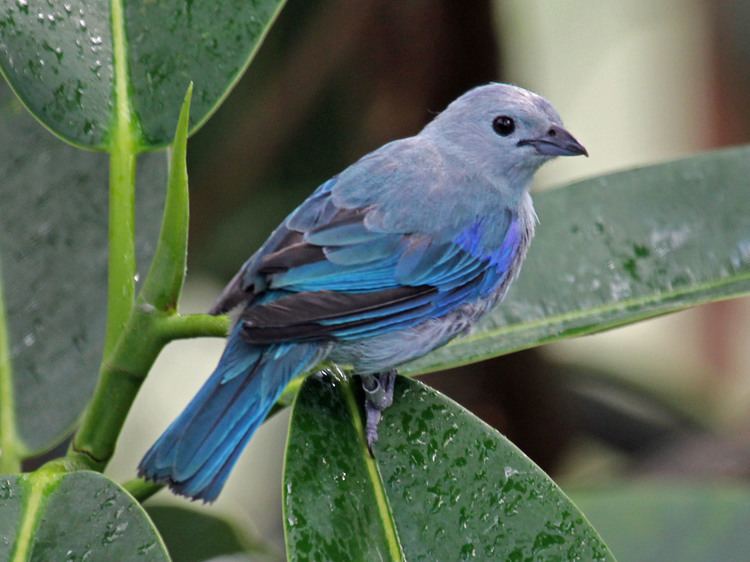Order Passeriformes | Phylum Chordata Family Thraupidae Scientific name Thraupis episcopus Rank Species | |
Similar Tanager, Bird, Thraupis, Palm tanager, Euphonia | ||
The blue-gray tanager (Thraupis episcopus) is a medium-sized South American songbird of the tanager family, Thraupidae. Its range is from Mexico south to northeast Bolivia and northern Brazil, all of the Amazon Basin, except the very south. It has been introduced to Lima (Peru). On Trinidad and Tobago, this bird is called blue jean.
Contents
Brazil bird blue gray tanager
Description

The blue-gray tanager is 16–18 cm (6.3–7.1 in) long and weighs 30–40 g (1.1–1.4 oz). Adults have a light bluish head and underparts, with darker blue upperparts and a shoulder patch colored a different hue of blue. The bill is short and quite thick. Sexes are similar, but the immature is much duller in plumage.
The song is a squeaky twittering, interspersed with tseee and tsuup call notes.
Subspecies

There are 13–15 commonly recognized subspecies, differing according to the exact hue of blue of the shoulder patch versus the rest of the plumage; they may be greyish, greenish or purplish-blue, with a lavender, dark blue or whitish shoulder patch. For example, T. e. berlepschi (endemic to Tobago) is a brighter and darker blue on the rump and shoulder, T. e. neosophilus with a violet shoulder patch occurs in northern Venezuela, Trinidad, eastern Colombia and the far north of Brazil, T. e. mediana of the southern Amazon basin has a white wing patch, and T. e. cana in the northern Amazon has blue shoulders.
Breeding and Habitat

The breeding habitat is open woodland, cultivated areas and gardens. The blue-gray tanager lives mainly on fruit, but will also take some nectar and insects. This is a common, restless, noisy and confiding species, usually found in pairs, but sometimes small groups. It thrives around human habitation, and will take some cultivated fruit like papayas (Carica papaya).

One to three, usually two, dark-marked whitish to gray-green eggs are laid in a deep cup nest in a high tree fork or building crevice. Incubation by the female is 14 days with another 17 to fledging. The nest is sometimes parasitised by Molothrus cowbirds.
Two birds studied in the Parque Nacional de La Macarena of Colombia were infected with microfilariae, an undetermined Trypanosoma species, and another blood parasite that could not be identified. Two other birds, examined near Turbo (also in Colombia), did not have blood parasites.
Status

Widespread and common throughout its large range, the blue-gray tanager is evaluated as Least Concern on the IUCN Red List of Threatened Species.

